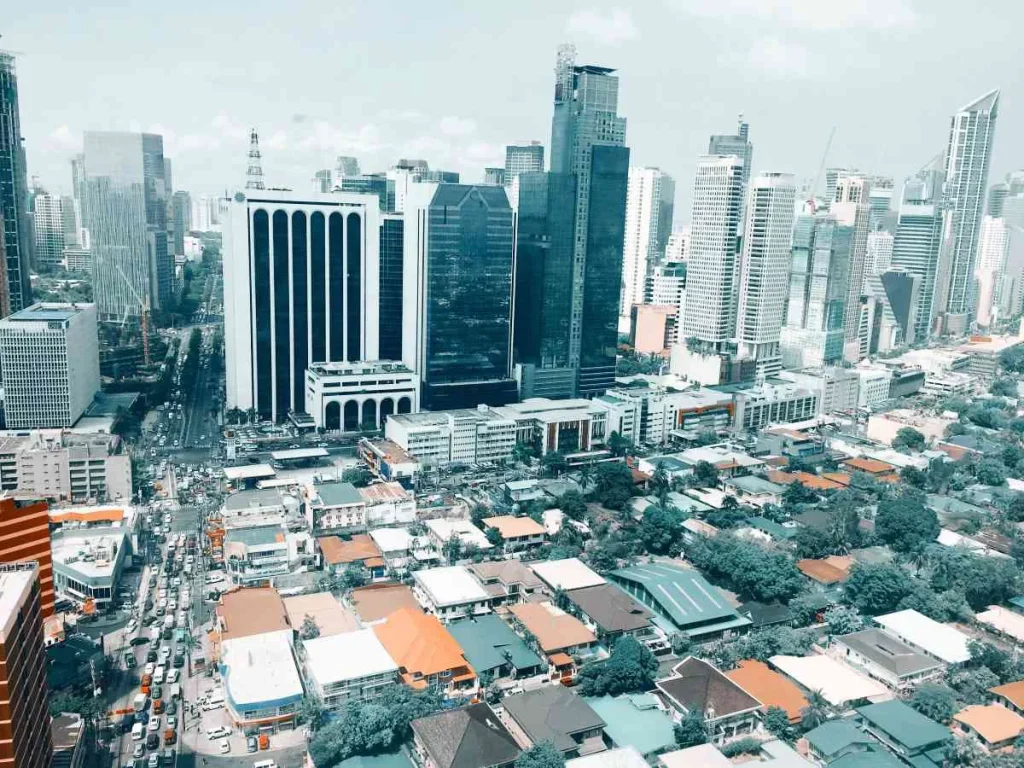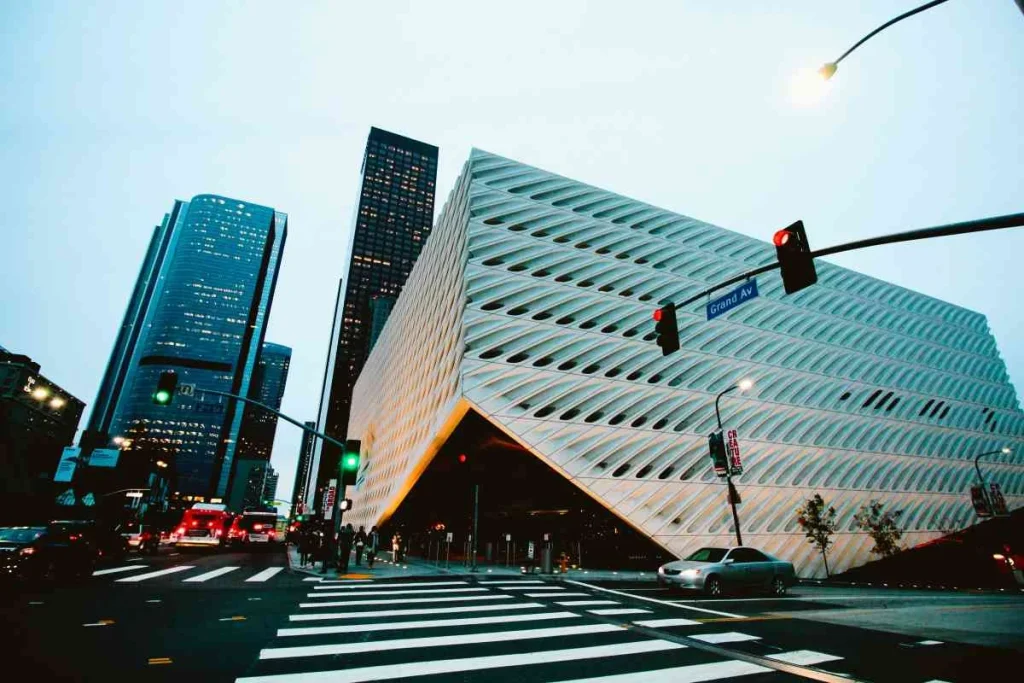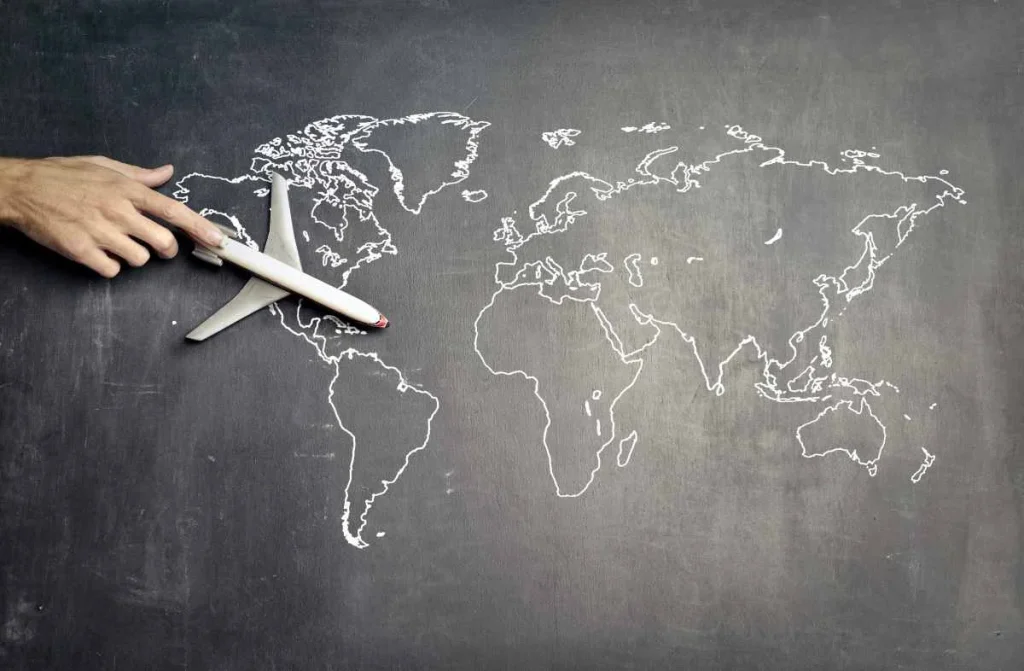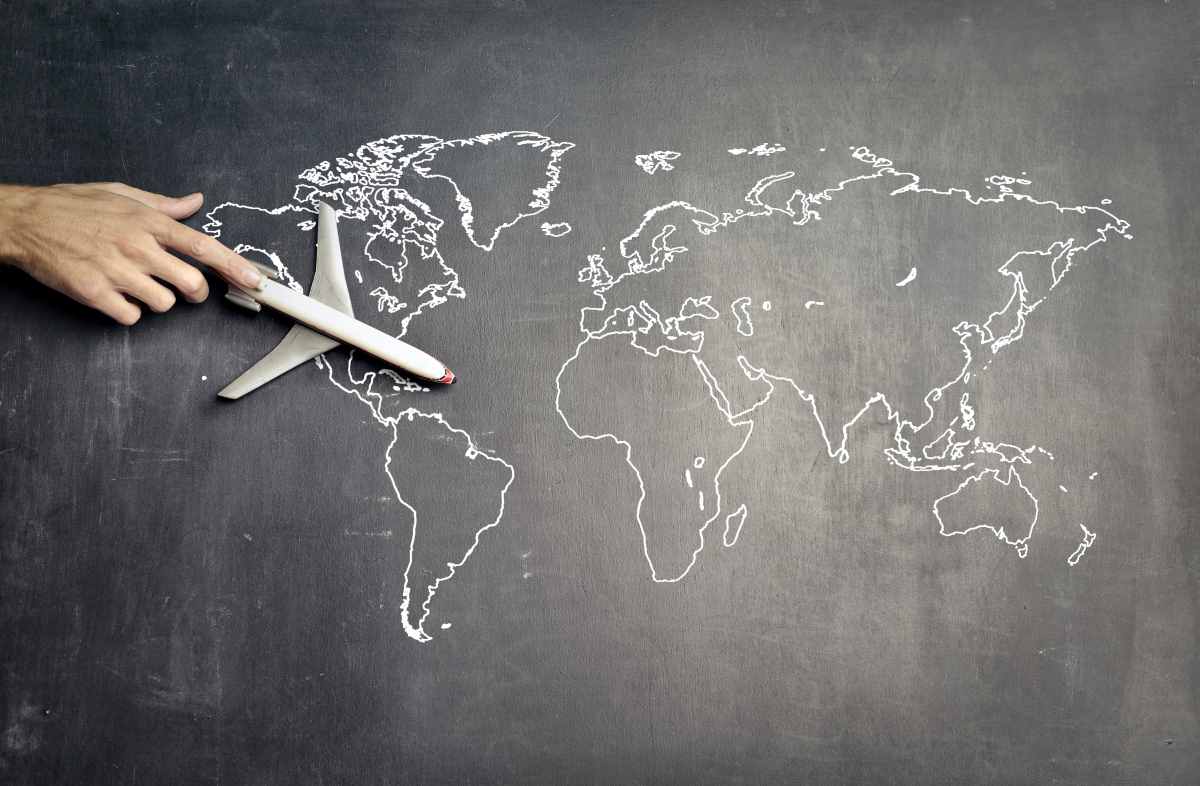With the lifting of the pandemic restrictions, the real estate business in the country is experiencing an upward trend. The Philippines is one of the best countries all over the world as a business destination for investment. At the same time, the Philippines has a big opportunity to flourish since among Southeast Asian countries, the Philippines shows the major potential to be a tourist attraction and business hub. Crown Asia’s house and lot for sale will have great investment opportunities since the locations of the property show significant convenience with a serene landscape while maintaining its prestige standard.
On the bright side, For a foreign investor, he or she won’t have a problem communicating with Filipinos as the country shows excellent proficiency in the English Language. The Philippines has become a desirable location for both domestic and foreign investors due to its diverse landscapes, rich cultural heritage, and rapidly expanding economy. President Ferdinand R. Marcos Jr. has effectively promoted the country as a welcoming business location, with envoys backing him in bringing investments. Marcos’ international travels are expected to attract investments that will create jobs, with the Department of Trade (DTI) estimating that around $88 million worth of investments could come to fruition this year. The business community has a wish list for the second State of the Nation Address, which includes measures on apprenticeship, tax easing, and public-private partnerships (PPP). PPP initiatives will contribute to the nation’s long-term economic growth and create the necessary infrastructure.
The Philippines has become a desirable location for both domestic and foreign investors because of its varied landscapes, rich cultural legacy, and quickly expanding economy. The archipelagic country offers a wide range of options across many industries, making it an appealing option for individuals looking to diversify their financial holdings.
According to Kris Crismundo (2023, Philippine News Agency), Edgar Chua, Chair of the Makati Business Club (MBC), mentioned that President Ferdinand R. Marcos Jr. has effectively promoted the Philippines as a welcoming business location for foreign investors.
Chua claimed that the envoys he had spoken to would back him wholeheartedly in bringing investments to the Philippines.
He thinks that the President has also been able to successfully advertise the country as a place to do business. They’ve been talking to a number of ambassadors and they have been impressed by the President, Chua told reporters at an MBC event over the weekend.
According to the senior executive of MBC, Marcos’ international travels will be able to attract investments that will create the nation’s urgently required number of jobs.
The DTI estimated that investments worth around $88 million from Marcos’ international travels might come to fruition this year.
As they previously said, they have a pipeline that they were able to build up amounting to about $70 billion, according to DTI Secretary Alfredo Pascual. “It’s not so large as of yet, but the potential is as they announced before, they have a pipeline that was able to build up amounting to around $70 billion,” he said in a briefing. They will support our manufacturing, renewable energy, and IT-BPM sectors, and are projected to produce about 17,800 direct jobs.
Singapore, Indonesia, the United States, Thailand, China, Japan, and European nations are just a few of the countries that the Chief Executive visited during his first year in office.
The business community has a wish list for the second State of the Nation Address that includes measures on apprenticeship, tax easing, and public-private partnerships (PPP).
The PPP should be seriously pushed, according to Chua, “given the very limited fiscal space that the government has, so that we don’t slow down the country. We need to continue and even expand our growth rate.”
PPP initiatives, according to the MBC, will contribute to the nation’s long-term economic growth and be crucial in creating the infrastructure that is required. (PNA)
Reasons to Start Investing if You Are Planning to Invest in the Philippines

1. Uprising Economic Growth
The excellent economic growth trajectory of the Philippines is one of the most alluring features for investors. The nation has continuously displayed robust economic growth over the past ten years, beating several of its regional rivals. Demand has been fueled by the expanding middle class and rising consumer spending in a variety of sectors, including retail and real estate, making conditions ideal for investors looking to enter a booming market.
According to Reuters (2023), On July 24, President Ferdinand Marcos Jr. of the Philippines praised his administration’s accomplishments over the previous year, including fighting inflation and getting the economy back on track, but warned that there are still many economic challenges to come.
The government is now “stabilizing the prices of all critical commodities” after more than a year in office and being battered by skyrocketing inflation that has hampered economic progress, according to Marcos.
In his second State of the Nation address, he declared that the inflation rate was “moving in the right direction.”Although there are many factors over which we have no control, we are making every effort with regard to those that we do. Marcos stated that the government wanted to boost domestic food production and supplement supply with “timely and calibrated importation” to help keep consumer costs in check.
For Marcos, who also heads the agriculture ministry, developing the long-neglected farm sector, which accounts for 10% of the nation’s economic production, is a top concern. For the fifth consecutive month, annual inflation decreased in June to 5.4%, which is still above the government’s 2-4% objective for the year. Hundreds of protestors pressured the government to address issues ranging from increased wages and inflation to the environment near the Congress building where Marcos spoke.
The Philippine economy may increase by as much as 8%, keeping it among Asia’s fastest-growing nations, according to Marcos, the son of the dictator toppled in a revolt in 1986. He also wants to halve the poverty rate, which was 18.1% as of 2021.
He reaffirmed his pledge to spend up to 6% of GDP on infrastructure, including the nation’s water supply, ports, airports, and roadways. In addition, Marcos spoke about the necessity to switch to renewable and low-carbon energy, which he predicted would make up 35% of the nation’s energy mix by 2030 and 50% by 2040.
Marcos pleaded with lawmakers in his speech before the joint session of Congress to back his top priorities, which include trying to tax single-use plastics and overhauling the pension system for uniformed and armed forces employees.
According to the Philippine News Agency (2023), An economist predicted on Friday that the second quarter of this year saw the Philippine economy rise by 6%, largely due to an increase in consumer spending.
According to Michael Ricafort, chief economist at RCBC, the increase in consumer expenditure can be ascribed to this year’s early implementation of reduced individual income tax rates.
“Lower individual income tax rates starting January 2023 for most income brackets as part of the TRAIN Law, could lead to increased consumer spending, which accounts for at least 75 percent of the economy, and, in turn, lead to faster economic growth,” Ricafort stated. The nation’s GDP increased by 6.4 percent in the first three months of the year. Prior to now, economic planners predicted that this year’s GDP would increase by 6 to 7 percent.
According to Ricafort, the government’s lower end of the aim may be accomplished this year. He said that the country’s favorable demographics might cause the Philippines’ GDP growth estimate to “normalize to around 6 percent in 2023 and beyond,” making it one of Asia’s fastest-growing economies. He continued by saying that efforts to further reopen the economy “overshadowed the risks of higher prices” because they increased sales and employment.
According to Ricafort, this year’s economic development will be fueled by strong remittances from abroad Filipino workers, increased government infrastructure investment, business process outsourcing growth, the return of in-person education, and international travel.

2. Reasons to Start Investing if You Are Planning to Invest in the Philippines
The Philippines, which is located in Southeast Asia, have access to important shipping lanes and are in a crucial geopolitical location. This place gives investors the chance to make a name for themselves not only in the local market but also in the nations nearby, facilitating commerce and commercial growth throughout the Asia-Pacific region.
According to Matthew Du, the Philippines’ economy is currently expanding at the fastest rate in the Southeast Asian region, and excellent development prospects are projected moving forward. Additionally, the Philippine economy showed promise in 2022, as seen by the nation’s GDP growth in the first quarter of 2022, which was significantly higher than the median expert prediction for the country’s economic performance and pre-pandemic level. According to the Philippine Statistics Authority (PSA), the GDP of the country increased by an astonishing 8.3 percent in the first quarter of 2022, which is far higher than the nominal growth of 6.6 percent that the majority of experts and research groups expected the country to see. The impressive 7.8 percent growth the nation experienced in the fourth quarter of 2021 is still higher than this figure. The Philippines now holds the top rank among Southeast Asian rivals for the fastest-growing and recovering economy thanks to its strong economic performance.
European investors were already interested in Philippine real estate even before the outbreak. According to the president of the European Chamber of Commerce of the Philippines (ECCP), as was reported in Philstar (2018), despite persisting concerns in 2018 about political stability and prospective modifications to the country’s incentive structure, investor interest from Europe remained robust. European investors were “extremely interested,” according to ECCP president Guenter Taus, in finding out more about the market’s trade and investment prospects.

3. Flourishing tourism sector
The Philippines is well known for its breathtaking natural beauty, which includes immaculate beaches and lush tropical vistas. As a result, the tourism sector is growing and offers a variety of investment opportunities. In a nation that draws millions of tourists each year, resorts, hotels, eco-tourism projects, and related hospitality services have the potential to generate large profits.
Because the Philippines is a developing nation, a variety of properties are available. The value of land holdings in the country is anticipated to rise, particularly those that are deemed economic zones in the Philippines because the majority of its regions are still being urbanized.
According to Market Business News (2023) by establishing economic zones for foreign nationals to invest in the Philippines, the Philippine Economic Zone Authority, or PEZA, hopes to contribute to the national effort to speed the development of jobs in rural parts of the nation. These economic zones, or ecozones, balance the commercial, industrial, agricultural, and tourism sectors, creating a developed and autonomous community in each zone. These ecozones are desirable locations for both international and domestic investment.
Economic zones are regarded as significant elements in the nation, not only for the jobs they produce but also for the growth of trade, exports, and investment. Due to the accessibility of the aforementioned variables to people and the rise in demand for either residential or commercial lots in the area’s radius, properties close to these sectors are in high demand.
There are 400 SEZs operating in the Philippines, including those in Baguio City, Subic, Bataan, the Laguna Technopark and Industrial Park, and Cavite, to name just a few. In addition, the Malacanang recently approved thirteen new economic zones, which the PEZA is now implementing and pushing for investment totaling Php17.9 billion.

4. Infrastructure Growth of the Philippines
The infrastructure of the Philippines has improved significantly thanks to the efforts of the government. Large-scale initiatives are reshaping connections inside and outside of large cities, such as airport expansions, road networks, and mass transit systems. In addition to enhancing logistics and transportation, infrastructure development opens up new investment opportunities in the building, real estate, and associated industries.
According to Philstar (2023), The Marcos administration wants to increase annual investment from the level before the pandemic, according to Nomura of Japan, who anticipates that infrastructure development in the Philippines would pick up speed in the coming years.
Due to a wider reopening of the economy following the relaxation of stringent COVID quarantine and lockdown regulations, the Philippine economy increased to 7.6 percent last year from 5.7 percent in 2021.
A stronger-than-expected GDP increase of 6.4 percent in the first quarter helped to sustain the development; this was faster than the market expectation of 6.1 percent but slower than the growth of 7.1 percent in the fourth quarter of last year and eight percent in the first quarter of 2022.
5. Real Estate Market is Strong
Both domestic and foreign investors have a lot of options in the Philippine real estate market. Residential, commercial, and industrial property demand is increasing, which could lead to profitable investments. In order to meet the expanding needs of a thriving market, upscale residential constructions, office buildings, and shopping malls are increasing.
According to Business World (2023), As 2023 drew near, there was a lot of optimism surrounding the Philippine real estate market since solid macroeconomic fundamentals were predicted to shield the economy of the nation from the negative consequences of the COVID-19 epidemic and rising global inflation rates.
The cautious optimism seems to endure into the second half of the year, despite the fact that economic headwinds are still there in the background.
Many other experts agree with JLL Philippines, a property consultant, who has stated that there is reason for hope in the real estate market this 2023.
According to Colliers data, office vacancy slightly decreased from 18.8% in the fourth quarter of 2022 to 18.7% in the first quarter of 2023.
“For the seventh straight quarter, the Metro Manila office market reported positive net take-up. Colliers projects net take-up to increase slightly from 110,500 square meters in 2022 to 116,400 square meters by the end of 2023, according to their Q1 Property Market Report – Office.
“Office vacancy, however, which marginally improved to 18.7% in Q1 2023 from 18.8% in Q4 2022, remains elevated due primarily to the implementation of hybrid work arrangements and the continued completion of new office buildings.”
Rents are still declining nationwide, the business noted, and are expected to level out by the end of 2023.

6. Proficiency in English
Communication is simple for both visitors and expats in the Philippines due to the widespread use of English and its ease of understanding. Due to its language advantage, the nation has become a well-liked outsourcing location, especially in the business process outsourcing (BPO) industry, where international corporations set up shops to take advantage of a trained English-speaking workforce.
According to Cloud Employee, Since the Americans colonized the Philippines, English has been the primary language of instruction in both schools and institutions there. The system has been modified, particularly with regard to the usage of English, as Filipinos realized the benefits of learning the language for interacting with Westerners for commerce and tourism.
Despite the alleged fall in educational quality among Filipino youngsters, the nation’s curriculum is always being improved. The K–12 curriculum was recently implemented in the Philippines, lengthening the 10-year educational cycle by two additional years and increasing spending on education. Since the reform, there has been a rise in tertiary enrollment, an increase in tertiary completion rates, and greater passing rates for professional licensure tests, among other outcomes.
Business destinations in the Philippines
Based on Pawnhero, Makati Central Business District is the Philippines’ premier financial and business hub, with numerous businesses, headquarters of blue chip companies, largest banks, and the Philippine Stock Exchange located there. Its prestige address and easy access to major thoroughfares make it an ideal place to start a business. Ortigas, the crossroad of Makati and Quezon City, is a top choice for businesses due to its easy access to major thoroughfares and upcoming redevelopment programs. Quezon City Business District is set to compete with Makati CBD, offering an untapped opportunity for businesses in one prime address. Taguig City, the fastest-growing central business district in the Philippines, is considered a top-tier hub for business due to its LEED-accredited skyscrapers and its success as an expat investment ground. Pasay, known as the gateway to the Philippines, has evolved from a retail complex to a thriving business and leisure destination, with the largest events found in Pasay. Alabang, the center business district of the south, is a leisurely yet business-oriented development with a suburban atmosphere.
Related Blog: The Time is Now: Philippines, the Best Place to Invest


